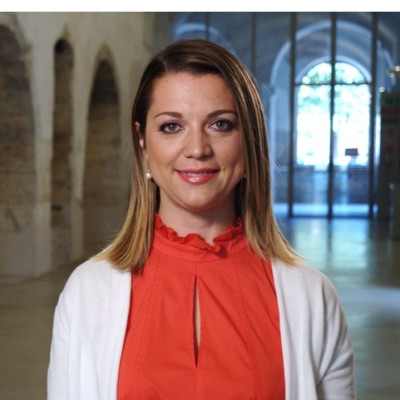Studying at the University of Verona
Here you can find information on the organisational aspects of the Programme, lecture timetables, learning activities and useful contact details for your time at the University, from enrolment to graduation.
Academic calendar
The academic calendar shows the deadlines and scheduled events that are relevant to students, teaching and technical-administrative staff of the University. Public holidays and University closures are also indicated. The academic year normally begins on 1 October each year and ends on 30 September of the following year.
Course calendar
The Academic Calendar sets out the degree programme lecture and exam timetables, as well as the relevant university closure dates..
| Period | From | To |
|---|---|---|
| Primo Semestre Triennali | Sep 18, 2017 | Jan 12, 2018 |
| Secondo Semestre Triennali | Feb 19, 2018 | Jun 1, 2018 |
| Corsi intensivi estivi (Alba di Canazei) | Jul 9, 2018 | Aug 3, 2018 |
| Session | From | To |
|---|---|---|
| Prove Parziali Primo Semestre | Nov 6, 2017 | Nov 10, 2017 |
| Esami Sessione Invernale triennali 2017 | Jan 15, 2018 | Feb 16, 2018 |
| Prove Parziali Secondo Semestre | Apr 9, 2018 | Apr 13, 2018 |
| Esami sessione estiva triennali 2018 | Jun 4, 2018 | Jul 6, 2018 |
| Esami sessione autunnale 2018 | Aug 27, 2018 | Sep 14, 2018 |
| Session | From | To |
|---|---|---|
| Lauree sessione autunnale (validità a.a. 2016/17) | Nov 27, 2017 | Nov 28, 2017 |
| Lauree sessione invernale (validità a.a. 2016/17) | Apr 4, 2018 | Apr 6, 2018 |
| Lauree sessione estiva (validità a.a. 2017/18) | Sep 10, 2018 | Sep 11, 2018 |
| Period | From | To |
|---|---|---|
| Ognissanti | Nov 1, 2017 | Nov 1, 2017 |
| Festa Immacolata Concezione | Dec 8, 2017 | Dec 8, 2017 |
| attività sospese (Natale) | Dec 23, 2017 | Jan 7, 2018 |
| Easter break | Mar 30, 2018 | Apr 3, 2018 |
| Liberation Day | Apr 25, 2018 | Apr 25, 2018 |
| attività sospese (Festa dei lavoratori) | Apr 30, 2018 | Apr 30, 2018 |
| Festa dei lavoratori | May 1, 2018 | May 1, 2018 |
| Festa Patronale | May 21, 2018 | May 21, 2018 |
| attività sospese estive | Aug 6, 2018 | Aug 24, 2018 |
Exam calendar
Exam dates and rounds are managed by the relevant Economics Teaching and Student Services Unit.
To view all the exam sessions available, please use the Exam dashboard on ESSE3.
If you forgot your login details or have problems logging in, please contact the relevant IT HelpDesk, or check the login details recovery web page.
Academic staff
Borello Giuliana
 giuliana.borello@univr.it
giuliana.borello@univr.it
 045 802 8493
045 802 8493
 simona.gamba@univr.it
simona.gamba@univr.it
Study Plan
The Study Plan includes all modules, teaching and learning activities that each student will need to undertake during their time at the University.
Please select your Study Plan based on your enrollment year.
1° Year
| Modules | Credits | TAF | SSD |
|---|
2° Year activated in the A.Y. 2018/2019
| Modules | Credits | TAF | SSD |
|---|
3° Year activated in the A.Y. 2019/2020
| Modules | Credits | TAF | SSD |
|---|
| Modules | Credits | TAF | SSD |
|---|
| Modules | Credits | TAF | SSD |
|---|
| Modules | Credits | TAF | SSD |
|---|
| Modules | Credits | TAF | SSD |
|---|
Legend | Type of training activity (TTA)
TAF (Type of Educational Activity) All courses and activities are classified into different types of educational activities, indicated by a letter.
Statistics (2018/2019)
Teaching code
4S00121
Teacher
Coordinator
Credits
9
Language
Italian
Scientific Disciplinary Sector (SSD)
SECS-S/01 - STATISTICS
Period
primo semestre lauree triennali dal Sep 17, 2018 al Jan 11, 2019.
Learning outcomes
The course aims at providing the basic techniques of descriptive statistics, probability and statistical inference for undergraduate students in business and economic sciences that have acquired the necessary preliminary mathematical notions. Overall, these techniques provide the necessary toolkit for quantitative analysis in the processes related to the observation of collective phenomena. From a practical point of view, these techniques are necessary for descriptive, interpretative and decision-making purposes for conducting statistical surveys related to economic and social phenomena. In addition to providing the necessary mathematical statistics apparatus, the course aims at providing conceptual tools for critical evaluation of the methodologies considered.
Program
a) DESCRIPTIVE STATISTICS
• Data collection and classification; data types.
• Frequency distributions; histograms and charts.
• Measures of central tendency; arithmetic mean, geometric mean and harmonic mean; median; quartiles and percentiles.
• Variability and measures of dispersion; variance and standard deviation; coefficient of variation.
• Moments; indices of skewness and kurtosis.
• Multivariate distributions; scatterplots; covariance; variance of the sum of more variables.
• Multivariate frequency distributions; conditional distributions; chi-squared index of dependence; Simpson’s paradox.
• Method of least squares; least-squares regression line; Pearson’s coefficient of linear correlation; Cauchy-Schwarz inequality; R^2 coefficient; total, explained and residual deviance.
b) PROBABILITY
• Random experiments; sample space; random events and operations; combinatorics.
• Conditional probability; independence; Bayes' theorem.
• Discrete and continuous random variables; distribution function; expectation and variance; Markov and Tchebycheff's inequalities. Special discrete distributions: uniform, Bernoulli, Binomial, Poisson and geometric.
Special continuous distributions: continuous uniform, Gaussian, exponential.
• Multivariate discrete random variables; joint probability distribution; marginal and conditional probability distributions; independence; covariance; correlation coefficient.
• Linear combinations of random variables; average of independent random variables; sum of independent, Gaussian random variables.
• Weak law of large numbers; Bernoulli’s law of large numbers for relative frequencies; central limit theorem.
c) INFERENTIAL STATISTICS
• Sample statistics and sampling distributions; Chi-square distribution; Student's t distribution; Snedecor's F distribution.
• Point estimates and estimators; unbiasedness, efficiency, consistency; estimate of a mean, of a proportion, of a variance.
• Confidence intervals for a mean, for a proportion (large samples) and for a variance.
• Hypothesis testing; one and two tails tests for a mean, for a proportion (large samples) and for a variance; hypothesis testing for differences between two means, two proportions (large samples) and two variances.
Textbooks
- A. AZZALINI (2001) Inferenza statistica: una presentazione basata sul concetto di verosimiglianza, 2nd Ed.,
Springer Verlag Italia.
- E. BATTISTINI (2004) Probabilità e statistica: un approccio interattivo con Excel. McGraw-Hill, Milano.
- S. BERNSTEIN, R. BERNSTEIN (2003) Statistica descrittiva, Collana Schaum's, numero 109. McGraw-Hill, Milano.
- S. BERNSTEIN, R. BERNSTEIN (2003) Calcolo delle probabilita', Collana Schaum's, numero 110. McGraw-Hill, Milano.
- S. BERNSTEIN, R. BERNSTEIN (2003) Statistica inferenziale, Collana Schaum's, numero 111. McGraw-Hill, Milano.
- F. P. BORAZZO, P. PERCHINUNNO (2007) Analisi statistiche con Excel. Pearson, Education.
- D. GIULIANI, M. M. DICKSON (2015) Analisi statistica con Excel. Maggioli Editore.
- P. KLIBANOFF, A. SANDRONI, B. MODELLE, B. SARANITI (2010) Statistica per manager, 1st Ed., Egea.
- D. M. LEVINE, D. F. STEPHAN, K. A. SZABAT (2014) Statistics for Managers Using Microsoft Excel, 7th Ed.,
Global Edition. Pearson.
- M. R. MIDDLETON (2004) Analisi statistica con Excel. Apogeo.
- D. PICCOLO (1998) Statistica, 2nd Ed. 2000. Il Mulino, Bologna.
- D. PICCOLO (2010) Statistica per le decisioni, New Ed. Il Mulino, Bologna.
Teaching methods
Course load is equal to 84 hours: the course consists of 48 lecture hours (equal to 6 ECTS credits) and of 36 exercise hours (equal to 3 ECTS credits).
Study Guide
A detailed syllabus will be made available at the end of the course on the e-learning platform.
Prerequisites
Students are supposed to have acquired math knowledge of basic concepts like limit, derivative and integral.
Exercise sessions
Exercise sessions are integral part of the course and are necessary to adequate understanding of the topics.
Tutoring activities
There will be optional tutoring hours devoted to exercises before each exam session. More detailed information will be made available in due course.
| Author | Title | Publishing house | Year | ISBN | Notes |
|---|---|---|---|---|---|
| G. Cicchitelli, P. D'Urso, M. Minozzo | Statistica: principi e metodi (Edizione 3) | Pearson Italia, Milano | 2018 | 9788891902788 |
Examination Methods
The exam can be passed through two partial written tests or a general written test.
Contents, assessment methods and criteria for partial written tests
The first partial written test focuses on the part of the program explained until the break at the end of October, typically on Descriptive Statistics and part of Probability (cf. program of the course). The second partial written test focuses on the rest of the program. The topics of the program on which each partial written test is based will be defined in detail in due course. The bonus earned by the student when passing the first partial written test can be used to access the second partial written test in ONLY ONE of the two exam sessions in January and February. In case of
- student's withdrawal during the second partial written test
- failing of the second partial written test
- failing of the total exam due to a final exam grade less than 18/30 (cf. assessment methods and criteria for partial written tests)
the exam can be subsequently taken ONLY through a general written test.
Both partial written tests include exercises and theoretical questions. Each partial written test is passed if the score is greater than or equal to 15/30. If both partial written tests are passed, the final exam mark results from the weighted average (eventually rounded up to the least greater integer) of the grades obtained in the single partial written tests. The exam is passed if this average is greater than or equal to 18/30.
Contents, assessment methods and criteria for general written test
The general written test covers all topics of the program and includes exercises and theoretical questions. The exam is passed if the score is greater than or equal to 18/30.
Contents, assessment methods and criteria are the same for attending and non-attending students.
Type D and Type F activities
| years | Modules | TAF | Teacher |
|---|---|---|---|
| 1° 2° 3° | Advanced Excel Laboratory (Verona) | D |
Marco Minozzo
(Coordinator)
|
| 1° 2° 3° | Excel Laboratory (Verona) | D |
Marco Minozzo
(Coordinator)
|
| 1° 2° 3° | Business Ethics Seminar | D |
Renzo Beghini
(Coordinator)
|
Career prospects
Module/Programme news
News for students
There you will find information, resources and services useful during your time at the University (Student’s exam record, your study plan on ESSE3, Distance Learning courses, university email account, office forms, administrative procedures, etc.). You can log into MyUnivr with your GIA login details: only in this way will you be able to receive notification of all the notices from your teachers and your secretariat via email and soon also via the Univr app.
Graduation
List of theses and work experience proposals
| theses proposals | Research area |
|---|---|
| Proposte di tesi triennali | Various topics |
































